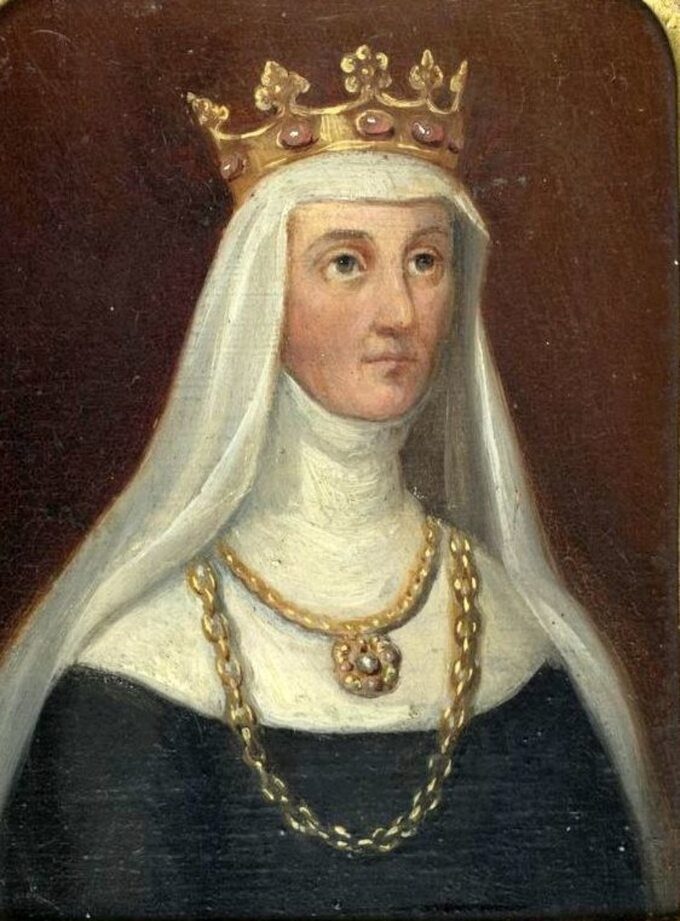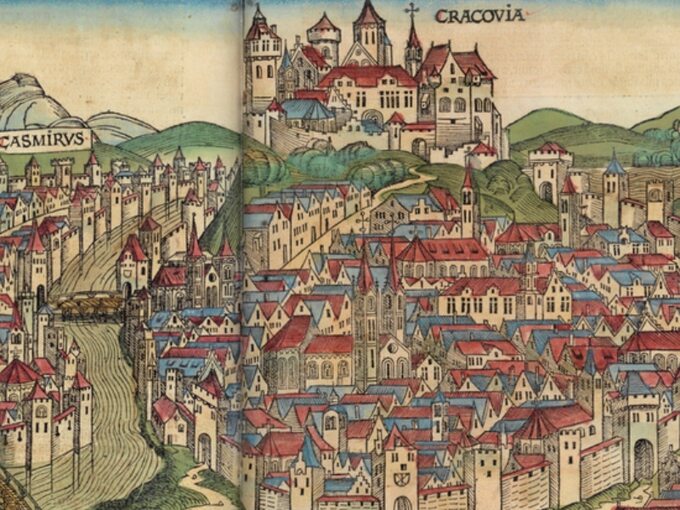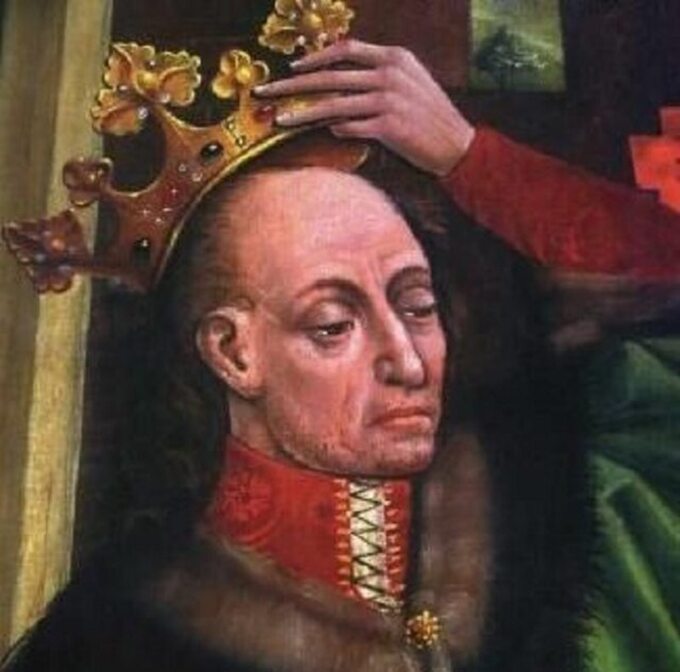Elżbieta Granowska, also known as Elżbieta Pilecka, probably would not have left a special mark in history if it were not for her marriage to the king, although her life without him was quite colorful. The happiness of Elizabeth and Vladislav Jagielo did not last long. The queen also did not give the ruler the desired heir to the throne.
Passion and short-lived happiness
Elizabeth was born about 1370-1372. His father was Otto of Pilza, a trusted man of Casimir the Great, who gave him a lancut as a reward for his services. The mother was Jadwiga of Melštín, who came from a family of great service to the crown. His grandfather was Spycimir Leliwita, his father was Jan (Jasiek) Melsztyński, and his brother was Spytek Melsztyński – all three of whom were among the closest advisers of Casimir the Great, and later Władysław Jagiełło, and in turn served as castellan. Krakow. Moreover, Elizabeth's mother, because she was closely connected to the court, was chosen to be the godmother of the pagan prince of Lithuania, Jogailo, and the future king, who was to become the husband of Hedwig of Anjou. It was then, during the baptism ceremony (February 15, 1386), that Elizabeth and Vladislav probably met, but we do not know anything about their possible meeting.
Therefore, Elizabeth came from important, powerful and very rich families. When his father died in 1384, he became the heir to a vast estate and great fortune. He was one of the richest men in the crown and he was still unmarried. Therefore, it became the object of interest of many nobles.

It is generally accepted that Elizabeth had three husbands before marrying Jagiello. He was forced into his first marriage – it was the most dramatic episode in his life.
In May 1389, Elzbieta and her mother, who were in Pilika Castle, were kidnapped by Wisla Chambor, whose family had long been friends with the family of Elzbieta's father, Otto. The women were exiled to Silesia, where Wiesel forced Elizabeth's mother to agree to her daughter's wedding. Jadwiga probably had no other choice, because abducting a virgin meant shame for her. It is possible that Wiesel had raped Elizabeth before. In this situation, the only solution was a wedding, because there was a fear that no one wanted Elizabeth anyway.
Perhaps Wiesel, in addition to wanting to seize Elizabeth's property, also had an “order” to abduct her from the King of Bohemia, who himself wanted to seize the rich lady's lands on the Polish-Czech border. Wisla, who was also his subject, guaranteed that the Pilecki estate would be under the rule of the Czechs. Moreover, the king of Poland, who could attack Chembor and the Czechs, was defeated by Mate, Wiesel placed himself under the protection of the Teutonic Knights and the Masovian prince, Siemowit IV. However, these actions did not protect him from fighting against people loyal to the crown. In Greater Poland, his lands were attacked by Bartosz Odolanow, and at the same time, by order of the king and at the request of Jadwiga's brother, Spitek of Melština, Jan of Jicin, whose father had once served Casimir the Great, arrived. To help kidnapped women.

In 1390, John freed Elizabeth and Jadwiga and brought them to Poland. However, Wiesel did not stop resenting his wife. At the turn of 1392 and 1393, he arrived in Krakow. However, Ian was already waiting for him there and, hiring the Arbatons, he killed Chambor as he was coming out of the baths. An honorable solution for Elizabeth's family was her marriage to John, thanks to whom she regained her freedom. However, the marriage was short-lived as Ian died a year or two later.
Elzbieta's next husband was Vincent Granowski, a nobleman from Great Poland, castellan of Naklos. It was not a dream match for the wealthy Elizabeth, but perhaps because of her previous relationships and her embarrassment by Chambord, few wanted to marry him. However, the relationship with Vincent turned out to be a happy one for Elizabeth. The couple had five children: Jadwiga, Otto, Elizabeth, Jan and Ofka. Unfortunately, Elizabeth was widowed again in 1410 when Vincent was poisoned, allegedly at the behest of the Teutonic Knights.
Queen Elizabeth
In March 1416, the second wife of Władysław Jagiełło, Anna Kileska, died. The king had no son from both Jadwiga of Anjou and Anna (he had a daughter Jadwiga from his marriage to Anna), so the ruler was increasingly concerned about the future of his family and crown. .

Elizabeth and Władysław met in January 1417 at Lubomla Castle, where the king's sister, Alexandra (she was the wife of the Duke of Mazovia), was staying at the time. Perhaps it was then that the king decided to marry his subject. However, he knew that the court would not be happy with this marriage. The problem was that under canon law, Elizabeth was the king's spiritual sister, as her mother was Jagiellon's godmother (the couple received a papal allowance after their wedding).
According to reports, Elzhbieta and Vladislav fell in love with each other at first sight. However, they had to keep their feelings a secret. Their next meeting took place in Lancut, where the king came at the invitation of Elizabeth. On May 1, 1417, they met again in Sanok. It was then that Vladislav informed his advisers that he intended to marry Elizabeth. The wedding took place the next day in the church of Sanok. They were married by Lviv Archbishop Jan Rzesowski. Elizabeth's enthronement was performed by the same bishop (later) because the bishop of Gniezno, who traditionally did it, refused to participate in the ceremony.
The wedding to Elizabeth had a wide response throughout the crown (and beyond). It was even suggested that the king had lost his mind and that Elizabeth had bewitched him. Jan Długosz, Marcin Bielski and other historians also saw bad omens between the king and his subjects. The Teutonic Knights mocked the King's marriage to the “old” Elizabeth at the Council of Constance, where the Polish delegation was also present. All the enemies of the crown were happy that Władysław, as it was believed, would have no male heir and that Poland would be plunged into chaos after his death.

The subjects were also not satisfied with the new queen, who, above all, as it was believed, had no chance of giving the crown an heir to the throne. Elizabeth was sometimes mocked very painfully. The despicable act, among others, was committed by Stanislav Ciolek, who worked in the royal office, and who was the author of the lampoon in which the king was compared to an old and lazy lion, and the queen to a sly shepherd who deceived the ruler. Ciolek was expelled from Wawel for writing this “poem”. He returned to his office only after the queen's death, thanks to the petition of Zbigniew Olesnicki.
Elżbieta Granowska died on May 12, 1420 in Kraków, probably of lung disease – she had been ill for several years. Many of the courtiers met his death with joy, but it did not detract from the majesty of death. However, some, regardless of the king's personality, rejoiced that God had taken away a queen who had no hope of conceiving an heir. The king quickly began to look for another candidate for his wife.
The queen was buried in Wawel, but when Stephen Bathory died, Anna Jagiellon ordered her remains to be buried in the place where Elizabeth was buried. Unfortunately, it is not known where Elizabeth's bones were taken.
Although the chroniclers painted his figure in the darkest colors, today it is difficult to say how much of the truth they conveyed. The queen, of course, was a beautiful woman (it was written about that too) and very intelligent. Perhaps Jagiellon needed such a companion, who was 55-65 years old when he married Elizabeth. The reluctance towards the queen was probably primarily caused by her age, past and origin, because marrying her was pointless.
Also read:
Coronation of Władysław Jagiełło, or the Jagiellonian, on the throne of PolandAlso read:
Johannes Falkenberg. The author of the anti-Polish lampoon, who hated Poland and JagiellonianAlso read:
Anna Cileyska. Who was the second wife of Vladislav Jagielo?Also read:
Test: Vladislav Jagielo. How much truth does “Crown of Kings” show about Jagiell?
(tags translated)elżbieta granowska
